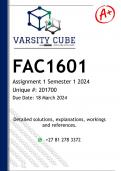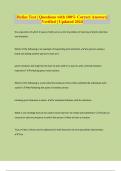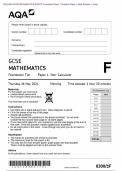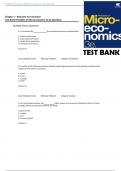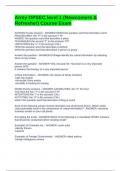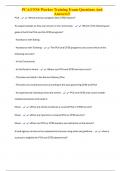Freehold Covenant Structure
Types of contracts and promises in transfer deeds are freehold covenants.
Step 1: Identify the covenants involved. Then move on to step 2. Then, analyse the nature of
the covenants when discussing them individually.
Test to identify nature of covenants:
Real o r Swift Investments v Combined English Stores a covenant touches and concerns the
personal? land if:
• The covenants bene t only the owner of the land for the time being. AND
• The covenants a ects the nature, quality, mode of use or value of the land. AND
• The covenant is not expressed to be personal.
Note: The fact that a covenant is to pay a sum of money will not prevent it from
touching and concerning the land provided the covenant is connected with something
to be done onto or in relation to the land.
P o s i t i v e o r Positive: requires the Covenanter to do something (e.g., spending money; promise to
negative maintain the fence; not to let a wall fall into disrepair).
Negative/restrictive: requires the Covenantor not to do something.
Step 2: Identify who is the original Covenantor and covenantee?
Original parties to the covenant
Original covenantor • This is the promise maker who has the burden.
• Section 76 LPA 1925: The original covenantor is ALWAYS liable, even for
breaches by successors, so long as they relate to the land.
Protection:
• Original covenantor could get an indemnity covenant o the the successor in
title so when the original party is sued, they can recover from the successor
in title.
• Indemnity chain, i.e., the successor in title might also get an indemnity.
- Limitations: However, sometimes someone will be untraceable or
bankrupt or not worth suing and the chain breakdown, meaning someone
Original covenantee • This is the initial promise receiver who has the bene t.
• It is possible for the original covenantee to enforce any express covenant
against anyone who has the burden.
• However, they cannot sue successor in title if they have parted with the land.
ff fi fi ff
, Step 3: Has the bene t or burden passed under COMMON LAW or EQUITY? Always start
with common law.
Common Law
BENEFIT:
Has the bene t passed to a successor of the covenantee at common law? There are 2 ways that bene t will be
passed on.
Express Assignment: Automatic Assignment
S.136 LPA: There has been an express Automatic assignment will occur if the 3 conditions
assignment. from Smith and Snipes Hall Farm apply:
Requirements: 1. The covenant much touch and concern the land
• The assignment must occur at the OR (Swift criteria).
same time as the transfer of the land 2. The original covenantee and claimant (person
(not after). seeking to enforce covenant) must both have
• It must be in writing signed by the owned/own a legal estate in the land.
assignor. 3. The original parties must have intended the
• Written notice of the assignment covenant to run with the land (two ways).:
must be given to the person with the - Either through express annexation (saying so
burden of covenant. in the deed - see wording of transfer
document); or
- I m p l i e d b y s . 7 8 L PA 1 9 2 5 ( d e e m e d
annexation) - this will apply only to covenants
created after 1925.
BURDEN:
General Rule:
Austerberry v Oldham Corporation - Generally, the burden of covenants cannot pass to successors of
the original covenantor at common law because:
• Privity of contract: common law does not recognise the passing of the burden of freehold covenants to
successors of the covenantor.
• According to s.79 LPA, the original covenantor remains liable. Possible to sue the original covenantor
instead (indirect enforcement).
Note: If the original covenantor is sued, they may be able to recover from successor assuming there was
an express indemnity covenant in the transfer document.
See EXCEPTION Below.
fi fi fi
Types of contracts and promises in transfer deeds are freehold covenants.
Step 1: Identify the covenants involved. Then move on to step 2. Then, analyse the nature of
the covenants when discussing them individually.
Test to identify nature of covenants:
Real o r Swift Investments v Combined English Stores a covenant touches and concerns the
personal? land if:
• The covenants bene t only the owner of the land for the time being. AND
• The covenants a ects the nature, quality, mode of use or value of the land. AND
• The covenant is not expressed to be personal.
Note: The fact that a covenant is to pay a sum of money will not prevent it from
touching and concerning the land provided the covenant is connected with something
to be done onto or in relation to the land.
P o s i t i v e o r Positive: requires the Covenanter to do something (e.g., spending money; promise to
negative maintain the fence; not to let a wall fall into disrepair).
Negative/restrictive: requires the Covenantor not to do something.
Step 2: Identify who is the original Covenantor and covenantee?
Original parties to the covenant
Original covenantor • This is the promise maker who has the burden.
• Section 76 LPA 1925: The original covenantor is ALWAYS liable, even for
breaches by successors, so long as they relate to the land.
Protection:
• Original covenantor could get an indemnity covenant o the the successor in
title so when the original party is sued, they can recover from the successor
in title.
• Indemnity chain, i.e., the successor in title might also get an indemnity.
- Limitations: However, sometimes someone will be untraceable or
bankrupt or not worth suing and the chain breakdown, meaning someone
Original covenantee • This is the initial promise receiver who has the bene t.
• It is possible for the original covenantee to enforce any express covenant
against anyone who has the burden.
• However, they cannot sue successor in title if they have parted with the land.
ff fi fi ff
, Step 3: Has the bene t or burden passed under COMMON LAW or EQUITY? Always start
with common law.
Common Law
BENEFIT:
Has the bene t passed to a successor of the covenantee at common law? There are 2 ways that bene t will be
passed on.
Express Assignment: Automatic Assignment
S.136 LPA: There has been an express Automatic assignment will occur if the 3 conditions
assignment. from Smith and Snipes Hall Farm apply:
Requirements: 1. The covenant much touch and concern the land
• The assignment must occur at the OR (Swift criteria).
same time as the transfer of the land 2. The original covenantee and claimant (person
(not after). seeking to enforce covenant) must both have
• It must be in writing signed by the owned/own a legal estate in the land.
assignor. 3. The original parties must have intended the
• Written notice of the assignment covenant to run with the land (two ways).:
must be given to the person with the - Either through express annexation (saying so
burden of covenant. in the deed - see wording of transfer
document); or
- I m p l i e d b y s . 7 8 L PA 1 9 2 5 ( d e e m e d
annexation) - this will apply only to covenants
created after 1925.
BURDEN:
General Rule:
Austerberry v Oldham Corporation - Generally, the burden of covenants cannot pass to successors of
the original covenantor at common law because:
• Privity of contract: common law does not recognise the passing of the burden of freehold covenants to
successors of the covenantor.
• According to s.79 LPA, the original covenantor remains liable. Possible to sue the original covenantor
instead (indirect enforcement).
Note: If the original covenantor is sued, they may be able to recover from successor assuming there was
an express indemnity covenant in the transfer document.
See EXCEPTION Below.
fi fi fi

